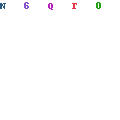thisnumbersdisconnected
New Member
http://www.foxnews.com/us/2013/08/30/new-age-education-fuzzy-math-and-less-fiction/
Health care. Foreign policy. The economy. The war on terror. All botched and turned into disasters by this obscenely inept administration. And now they're turning to education, with the help of the nation's governors.

If the new national Common Core educational standards influence curriculum the way some fear they will, students can say goodbye to literary classics and hello to fuzzy math, say critics.
The Common Core State Standards initiative, a plan devised by the nation's governors and backed by the Obama administration, seeks to set a uniform standard for grades K-12, to ensure kids all over the nation reach the same minimum level of learning. Some 45 states, in many cases enticed by federal grants, have signed on and testing of students in grades 3-8 and once in high school is scheduled to begin next year.
Supporters say Common Core only tests students in math and English, but critics say school districts will devise curriculum to maximize their students' performance on the national exams, and, in fact, have already begun that measure. And those same critics claim Common Core math standards barely cover basic geometry or second-year algebra and that the classics are all but ignored in English classes
The Common Core State Standards initiative, a plan devised by the nation's governors and backed by the Obama administration, seeks to set a uniform standard for grades K-12, to ensure kids all over the nation reach the same minimum level of learning. Some 45 states, in many cases enticed by federal grants, have signed on and testing of students in grades 3-8 and once in high school is scheduled to begin next year.
Supporters say Common Core only tests students in math and English, but critics say school districts will devise curriculum to maximize their students' performance on the national exams, and, in fact, have already begun that measure. And those same critics claim Common Core math standards barely cover basic geometry or second-year algebra and that the classics are all but ignored in English classes
Health care. Foreign policy. The economy. The war on terror. All botched and turned into disasters by this obscenely inept administration. And now they're turning to education, with the help of the nation's governors.
Last edited by a moderator:


